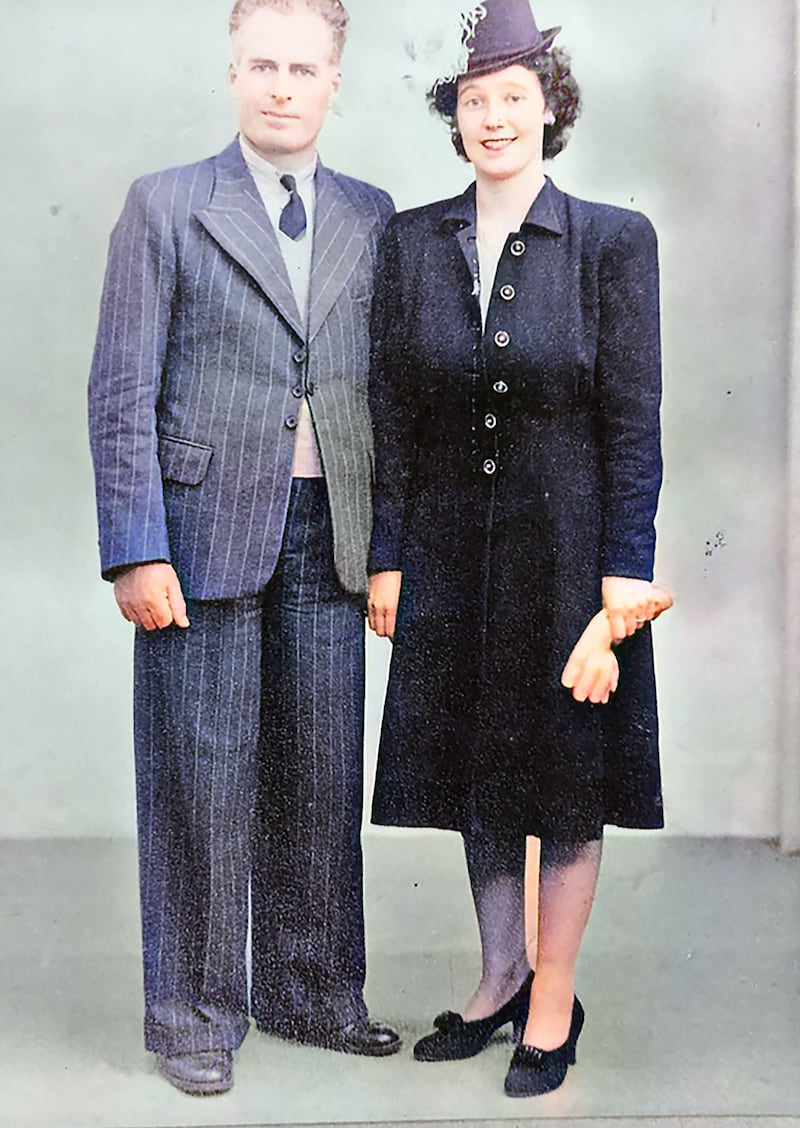Born: June 3rd, 1923
Died: December 17th, 2023
On certain rare occasions, ordinary people in the midst of an average day have changed history. But few have shaped as many lives as directly as Maureen Flavin, a postmistress in Blacksod, Co Mayo. In 1944, on her 21st birthday, she helped determine the outcome of World War II.
She died on December 17th in the Sonas Tí Aire nursing home in Belmullet, near the post office where she used to work, her grandson Fergus Sweeney said. She was 100.
READ MORE
The events that led Flavin to her unforeseeable moment of global consequence began in 1942 when she saw an ad for a job in the post office at Blacksod Point.
She got the job and learned that the remote post office also served as a weather station. Her duties included recording and transmitting weather data. She did that work diligently, though she did not even know where her weather reports were going. In fact, they were part of the Allied war effort.
Ireland was neutral in World War II but quietly helped the Allies in several ways, including by sharing weather data with Britain. Ireland’s position on Europe’s northwestern edge gave it an early sense of weather heading toward the continent. And Blacksod Point is just about the westernmost point of the coast.
Weather forecasting turned out to be an essential part of the Allies’ most famous gambit of the war – D-Day, the invasion aimed at gaining a foothold on the European mainland.
It took two years of meticulous planning. US General Dwight D. Eisenhower, who led the assault, decided to send more than 160,000 troops, nearly 12,000 aircraft and nearly 7,000 sea vessels to invade a 50-mile stretch of beach along the Normandy region of the French coast.
The Allies settled on June 5th, 1944, which promised a full moon, aiding visibility, and low tides, granting easier access to the beach.
A successful invasion would also depend on clear skies for the Allies’ aerial assault and calm seas for their landing. And the relatively primitive technology of the day – no satellites, no computer models – meant that the Allies would only have a few days warning about the weather.
By 1944, Flavin’s work orders had increased from on high. She and her colleagues now sent in weather reports not every six hours, but every hour of the day. “You would only have one finished when it was time to do another,” she recalled in a documentary made by RTÉ in 2019.

On her birthday, June 3th, she had a late-night shift: 12am to 4am. Checking her barometer, she registered a rapid drop in pressure indicating a likelihood of approaching rain or stormy weather. The report went from Dublin to Dunstable, the town that housed England’s meteorological headquarters. Flavin then received an unusual series of calls about her work. A woman with an English accent asked her, “Please check. Please repeat!”
She asked the postmistress’s son and Blacksod’s lighthouse keeper, Ted Sweeney, if she was making a mistake. “We checked and rechecked, and the figures were the same both times so we were happy enough,” she later told Ireland’s Eye magazine.
The same day, Eisenhower and his advisers were meeting at their base in England. James Stagg, a British military meteorologist, reported based on Flavin’s readings that bad weather was expected. He advised Eisenhower to postpone the invasion by a day.
The general agreed. June 5th saw rough seas, high winds and thick cloud cover. Some commentators – including John Ross, the author of Forecast for D-Day: And the Weatherman behind Ike’s Greatest Gamble (2014) – have argued that the invasion could well have failed if it had occurred that day.
Postponing the invasion beyond June 6th presented other issues. The tides and moon would not have been favourable again for several weeks when the Germans expected an attack. The element of surprise would have been lost. Ross told USA Today that victory in Europe might have been delayed a year.
Yet Flavin’s reports indicated not only that June 5th would be disastrous, but also that the weather on June 6th would be just good enough. Eisenhower ordered an invasion in which he proclaimed, “We will accept nothing less than full victory.”
By noon on June 6th, the skies cleared. The Allies endured thousands of casualties, but they won a European beachhead.
“We owe a lot to Maureen of the west of Ireland, us who invaded France on D-Day,” Joe Cattini, a British D-Day veteran, said in the RTÉ documentary, “because if it hadn’t been for her reading of the weather we would have perished in the storms.”
Maureen Flavin was born in Knockanure, Listowel, Co Kerry, where she grew up. Her parents, Michael and Mary (Mullvihill) Flavin, ran a village shop.
Maureen Flavin married Ted Sweeney, the lighthouse keeper, in 1946. When his mother, the postmistress, died, Maureen Sweeney succeeded her in the job.
She first heard about the significance of her weather forecast in 1956, when officials discussed it after moving the local weather station from Blacksod Point to a nearby town. It gained wider publicity during D-Day’s 50th anniversary, when meteorologist Brendan McWilliams wrote about the episode in The Irish Times.
Ted Sweeney died in 2001. In addition to Fergus Sweeney, Maureen Sweeney is survived by three sons, Ted, Gerry and Vincent, all of whom have worked in the Irish lighthouse service; a daughter, Emer Schlueter; 12 grandchildren; 20 great-grandchildren; and two great-great-grandchildren.
“There they were with thousands of aircraft and they couldn’t tolerate low cloud,” she said on radio in 2006. “We’re delighted we put them on the right road. We eventually had the final say.”
- A version of this article first appeared in The New York Times











